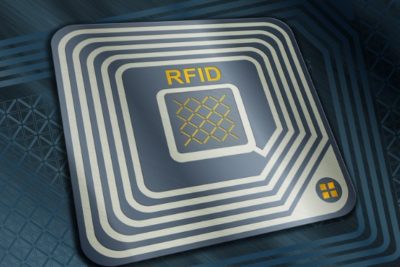Asset Use Tracking that Goes Beyond RFID

Companies understood the need for asset tracking technology once they realized how much time they spent looking for and assessing assets like tools and other business equipment.
Today, these organizations track these and any number of fixed assets such as machinery, land, and buildings and other resources. Using sophisticated, cloud-based solutions to determine their age, useful life, depreciation, and even the environmental conditions in which staff may have used an asset.
Asset tracking and management is simple and complex at the same time. But considering the global asset tracking market is expected to reach $36.3 billion by 2025, companies understand the need for effective asset tracking, even if how it works, in general, remains unclear.
Effective Asset Tracking Runs on Data
Efficient asset tracking and management requires data to ensure the availability of the right tools, equipment, and other resources when and where needed. Asset tracking is more than knowing where your tools and equipment are at a given moment, it’s knowing the finer details like audits, calibration status, service data, part replacements and other important information.
These data are all compiled into a single unified system accessible anytime and anywhere via a connected device like your smartphone. Inaccurate data can lead to costly out-of-service issues that create productivity and replacement problems.
Today’s asset tracking management systems can:
- report the physical location of all tools and equipment every minute of every day
- reduce labor costs
- reduce manual and erroneous data entry processes
- keep an accurate record of your asset transactions
Ineffective asset management is more than an inconvenience. Consider how easy it is to dismiss taking a few minutes looking for tools and supplies. It may seem insignificant, but when you add it all together, the aggregate effect can be crippling. If you have an employee who spends 10 minutes a day looking for the tools and equipment they need to do their job, you could be losing more than a whole 40-hour workweek every year.
(10 min/per day, 5 days/week, 48 workweeks/year)
The Magic of RFID
When choosing a tracking management system, look for intuitive dashboards to simplify your asset tracking at a glance. These dashboards outline every critical information you need to know about your assets. Through a QR Code or unique RFID, you can track and trace your asset’s status, location, and any transactions included. Timestamps also help keep track of the transaction date and days when each asset was used since the asset’s users are registered in the transaction details.
For instance, if a vital tool goes missing in the office, the asset tracking system will provide the last user ID to make it easier to identify the person who last used the device. The dashboard categorizes the assets based on their type and brand, making it easier to track both your physical and intangible assets and their availability, issue frequency and frequency of use.
Tracking Asset Issue Frequency
Implementing integrated inventory and asset management solutions helps eliminate bottlenecks in your business processes. Tracking your asset issue frequency and frequency of use helps save capital investment and maximize your investment.
You can identify patterns in your business such as assets you need to purchase to improve productivity versus items you keep buying and not using to its full extent.
- Should you purchase additional assets to increase efficiency?
- Are there idle assets, thus, reducing asset investment capital
In a quick example, a dental practice might own one crucial physical suction device (the asset). Over the course of one week, the administrators see the suction device is consistently checked out, many times with a waitlist for which hygienist can use it next, creating a bottleneck and diminishing patient care.
With a modern asset tracking solution, you can easily locate and track all assets and use their transaction data to gain deeper insight for decision-making. These parameters include the order status, last transaction date, frequency, and the real-time asset location and data.
Optimizing and Maximizing Your Assets
Using the asset tracking dashboards, you’re able to identify the number of transactions on each asset for analysis to identify the items used most often. You can determine which assets have been idle for an extended period to find out why. For example, you may find certain assets used during peak seasons have minimal usage during low seasons.
Now that you know more about keeping track of your assets, find out why our years of experience in the field can help you gain control of the asset management cost to your business.
Anytime Assets is a cloud-based solution that ensures your asset data is recorded in real-time and helps you track asset issue frequency. When assets remain at their maximum use, they can depreciate faster and show increasing signs of wear. This is when it’s time to evaluate the changes within your business, make informed decisions, plan your logistics, and set up a system that optimizes your asset utilization.
FAQs
What is asset issue frequency?
The track issue frequency feature records the number of times a business asset is issued or assigned, such as tools and equipment. A robust system records additional, extensive information about a particular asset, who uses it, when and where they used it.
Why is asset tracking issue frequency important?
Tracking issue frequency helps identify idle assets and those experiencing maximum use, allowing you to determine whether you have an asset surplus or deficit. With Anytime Assets and this level of business insight, you can control your assets and capital more efficiently.
How do I track asset issue frequency correctly?
The simplest way to use asset tracking frequency is through Anytime Assets, an asset management solution that offers you the capability to track different types of business assets, record and analyze that data, and then use it to enhance your business operations.
